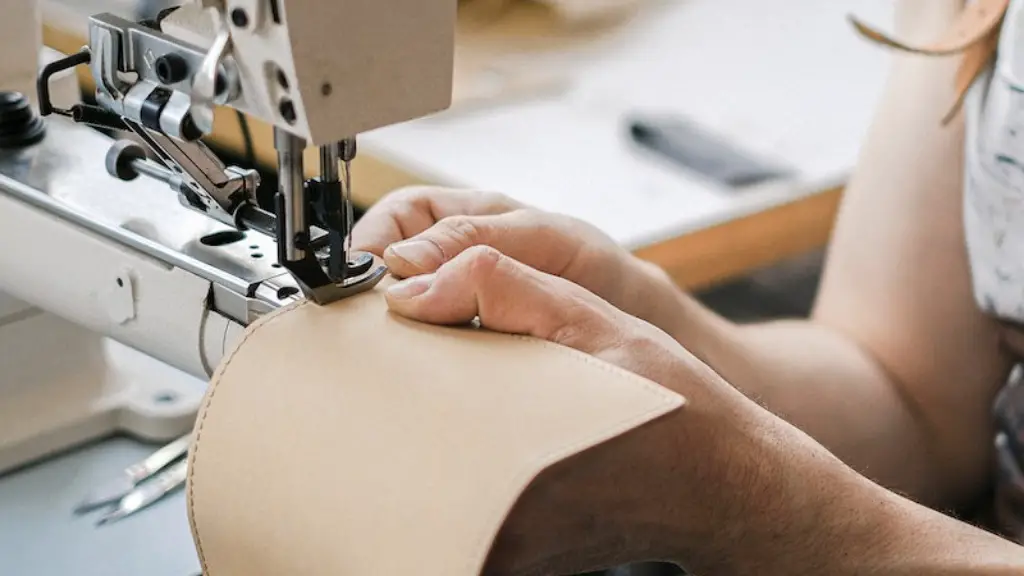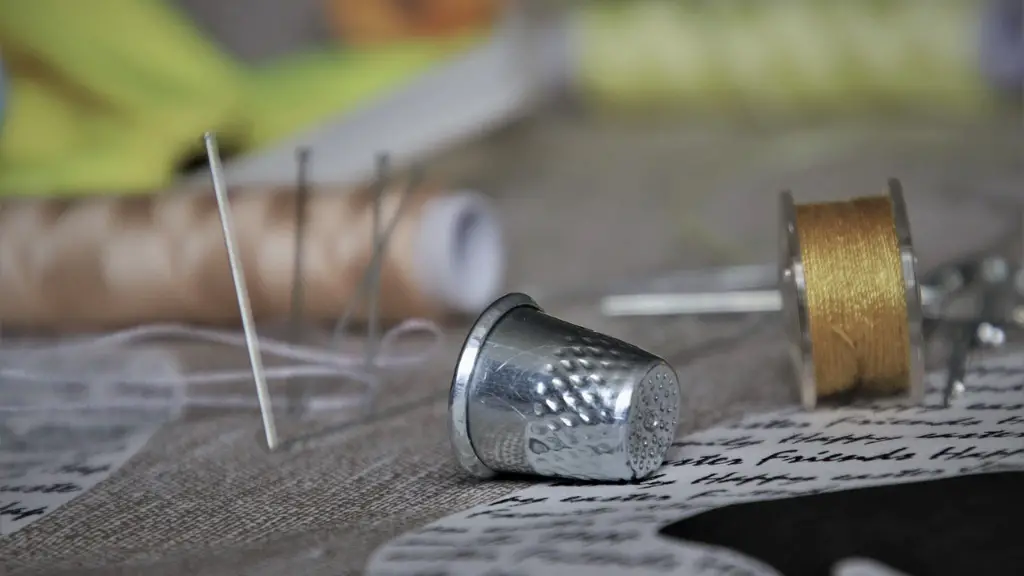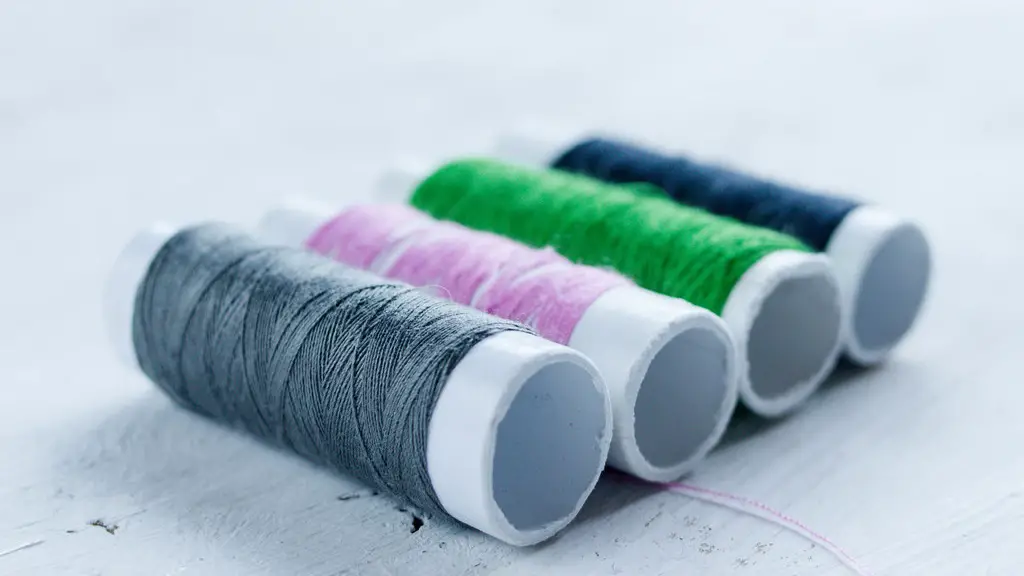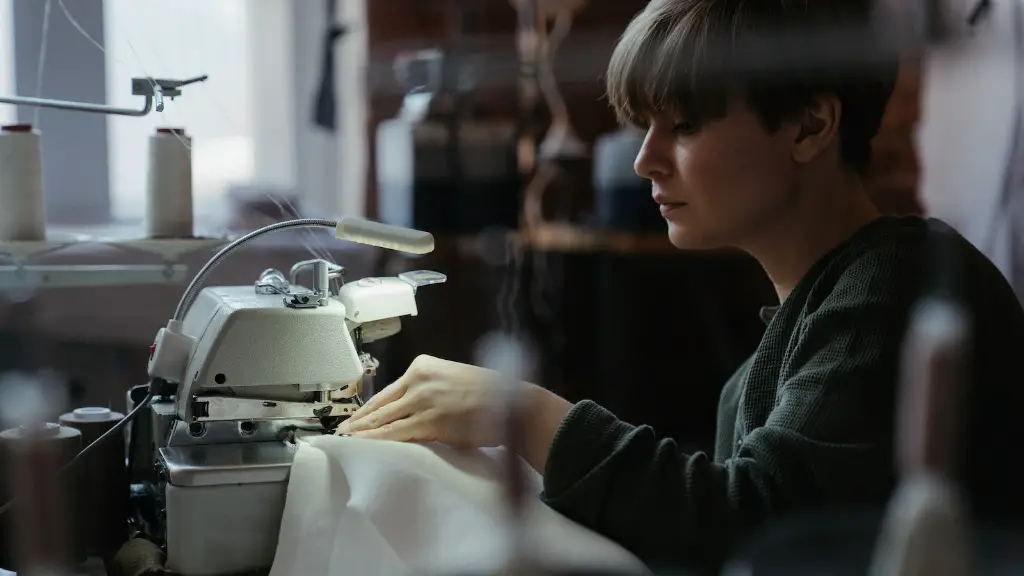Materials Needed for Sewing a Patch
Sewing a patch on requires the right materials, so make sure you gather the following supplies before starting the project:
- Sewing machine
- Patch
- Good quality thread that matches the fabric you will use.
- Fabric that will be used to adhere the patch.
- Scissors.
- Pins.
- Iron.
Instructions
Now that you have gathered all the necessary materials, it’s time to get started and learn the steps needed to sew on the patch.
Step 1: Prepare the Patch
The first step is to prepare the patch. Lay the patch down on the fabric, making sure it is centered. Once you’re sure everything is properly positioned, use the pins to secure the patch in place. This will make sure it won’t move when sewing.
Step 2: Iron the Patch
This step is important in order to secure the patch to the fabric. Place the patch over the ironing board and use the iron on the hottest setting to press the patch in place. Make sure to press each section of the patch so that it adheres properly to the fabric.
Step 3: Thread the Sewing Machine
Using good quality thread, thread the needle on the sewing machine. Make sure to use thread that is sturdy enough to hold the patch in place, but that also matches the fabric of the patch, so as not to be too visible.
Step 4: Sew the Patch
Once the thread is properly threaded through the machine, you are ready to start sewing the patch. Make sure the fabric is secure and the patch is centered. Then, use the sewing machine to sew around the edges of the patch. Make sure to go slowly and precisely so the sewing lines are even and the patch is properly secured.
Step 5: Trim the Thread
Once you have finished sewing the patch on the fabric, use the scissors to trim the thread. This will help clean up the edges and make the patch look neat and finished.
Step 6: Check Your Work
Once you have finished trimming the excess thread, double-check your work to make sure everything looks neat, secure, and evenly sewn.
Tips for Sewing on Patches
Sewing on patches is an art, and as you practice, you’ll get better with time. Here are a few tips to keep in mind while sewing on patches.
- Make sure to use quality threads, as they will hold better than cheaper ones.
- When pinning the patch to the fabric, use more pins than you think you need — it will help keep the patch in place while you sew.
- Take your time while sewing, particularly when it comes to sewing around the edges of the patch. A steady, even hand will make all the difference.
- After sewing the patch, check that the edges look neat and even.
- With careful stitching, you can make your patches look professional and attractive.
Alternatives to Sewing On Patches
Sewing patches isn’t the only way of adhering them to fabric, there are other alternatives that you can use if you don’t have the necessary equipment or skill to sew a patch.
Using an iron-on patch is a great alternative that is quick and simple to do. All you need is your fabric, the patch, and an iron. Ironing the patch on is a much quicker process than sewing it on and with the right technique and supplies, the patch can stay firmly in place.
Another alternatives to sewing on a patch is to use fabric glue. Fabric glue is a great option for attaching patches, if you don’t have the time or ability to sew. Simply apply a thin layer of glue to the patch and the fabric and press them together. Allow them to dry completely before wearing or washing your fabric.
Uses of Patches
Patches are typically used to repair clothing and to add decorative flair to fabric items. They come in all shapes and sizes, colors and materials, so you can find the perfect patch for any project.
Patches can be used to repair holes or torn fabric. They can be used to conceal stains or other blemishes on fabric. Patches can also be used to add decoration to items such as hats, bags, and t-shirts. They can be embroidered with words, symbols, or patterns, to give clothing a finished, personalized look.
Care of Patches
In order to ensure that your patches last as long as possible, it is important to care for them correctly. Patches should be washed separately from the rest of your clothing, either in a lingerie bag or by hand. Be sure to use a gentle detergent and air dry the patched item if possible.
When ironing, it’s important to use the lowest heat setting possible to avoid damaging the patch. It’s also important to avoid direct heat. Don’t iron directly onto the patch, but instead, place a layer of fabric between the iron and the patch.
Summary
Sewing patches onto fabric require the right materials and techniques. Start by gathering all your supplies such as thread and iron, and prepare the patch and fabric. Then, use a sewing machine to sew around the edges and properly secure the patch. Make sure to take your time and to follow the tips and instructions given to create a neat, professional finish. Alternatives to sewing the patch on are to use an iron-on patch and/or fabric glue. Finally, practice proper care to ensure the patch is kept in top condition.



